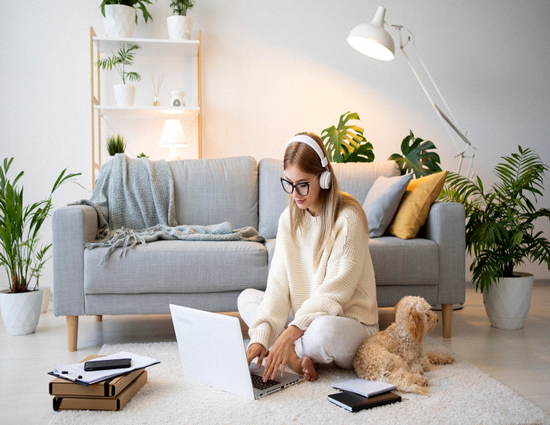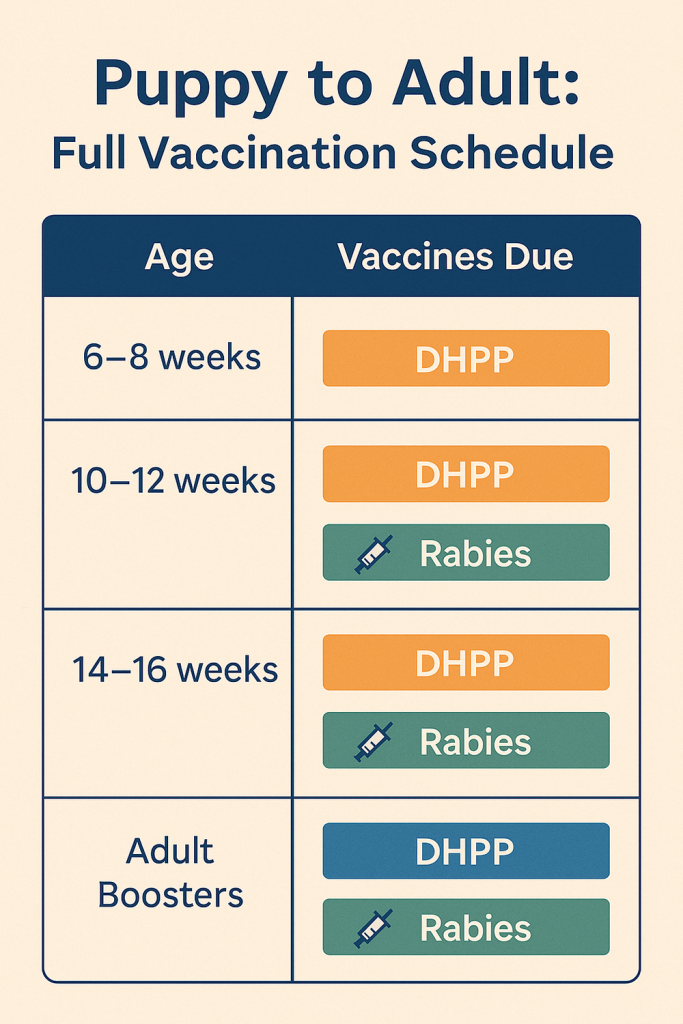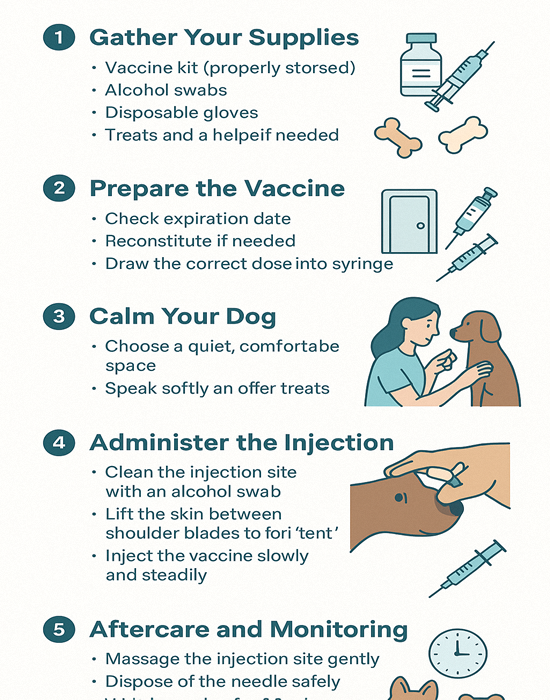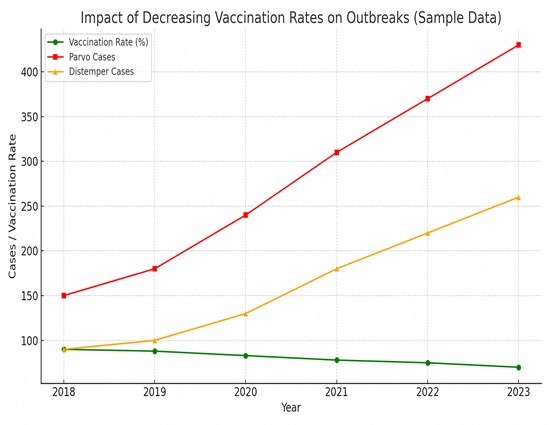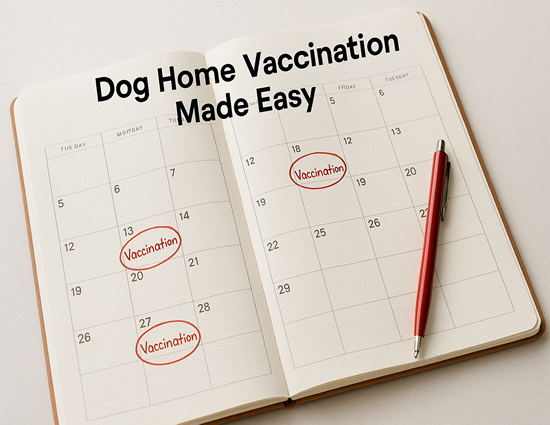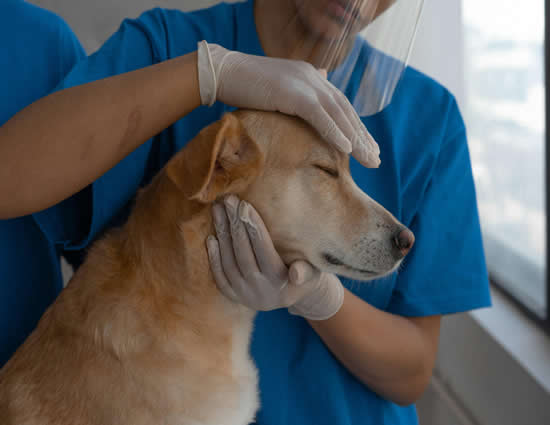Dog Home Vaccination Made Easy: A Safe & Stress-Free Guide for Pet Parents

Caring for a dog comes with immense joy, but it also carries serious responsibilities — and vaccinations are one of the most important. For years, the idea of vaccinating your dog meant scheduling appointments, driving across town, and sitting in crowded vet waiting rooms. But now, thanks to growing access to veterinary supplies and education, dog home vaccination is becoming a practical and preferred option for many pet owners.
Not only does it offer convenience and cost savings, but it also minimizes the stress your dog may feel during trips to the clinic. In this guide, we’ll break down how you can safely vaccinate your dog at home, what you’ll need, and when it’s best to involve a vet. If done correctly, dog home vaccination can be a game-changer in how you protect your pet’s health.
What Is Dog Home Vaccination?
Dog home vaccination simply refers to the process of administering vaccines to your dog in your own home, without visiting a veterinary clinic.
These vaccines are the same ones a veterinarian would use — the difference is who gives the shot and where it’s given. Most commonly, home vaccination is used for routine immunizations, especially for dogs who are up to date on their health records and have no complications. It’s important to understand that this practice doesn’t eliminate the need for veterinary oversight. Many states still require licensed veterinarians to administer rabies vaccines, and puppies or dogs with underlying health issues should be evaluated before any vaccines are given.
That said, home vaccination can be a convenient and humane way to keep your dog protected from harmful diseases like parvovirus, distemper, and kennel cough. As long as the vaccines are sourced from reputable suppliers, stored properly, and administered correctly, they are just as effective as those given in a clinic setting.
Why More Pet Owners Are Choosing Home Vaccinations
One of the biggest reasons dog owners are turning to home vaccination is to reduce stress — both for themselves and their pets. Veterinary clinics, while necessary and professional, can be intimidating environments for dogs. The unfamiliar smells, sounds, and other animals can trigger anxiety and make each visit a struggle. When vaccines are given at home, your dog remains in a familiar environment and is more likely to stay calm and cooperative. This makes the experience safer and more pleasant for everyone involved.
In addition to emotional benefits, home vaccination can also be more cost-effective. Many clinics charge a fee for the vaccine, the administration, and the office visit itself. When you buy vaccines directly from a veterinary supply source, you’re often paying only for the product — and in some cases, you can purchase multi-dose packs for added savings. For families with multiple dogs, this can translate into substantial financial relief over time.
Home vaccination also encourages stronger involvement from pet owners in their dog’s healthcare. Instead of being passive observers, owners learn valuable skills and gain confidence in managing their pet’s health. This proactive approach can enhance the overall well-being of the animal and deepen the pet-owner bond in meaningful ways.
Vaccines You Can Safely Administer at Home
When considering dog home vaccination, it’s crucial to know which vaccines are typically safe and legal to administer yourself.
Core vaccines like DHPP — which protects against distemper, hepatitis, parainfluenza, and parvovirus — are commonly available for at-home use. These are considered essential by most veterinarians because they guard against highly contagious and potentially fatal diseases. Non-core vaccines, such as those for Bordetella (kennel cough), leptospirosis, and Lyme disease, are also widely accessible for home use, especially if you live in areas where these diseases are prevalent.
However, there’s a very important caveat— the rabies vaccine is regulated in many states and usually must be administered by a licensed veterinarian. Rabies is a zoonotic disease, meaning it can be transmitted to humans, and because of its severity, authorities often require a vet to oversee vaccination for legal and safety reasons.
Before you decide to vaccinate at home, always research your local laws or consult with your veterinarian. Some clinics may be willing to guide you through the process, prescribe the vaccines legally, or offer instructional resources to help you administer them correctly.
What You’ll Need for Dog Home Vaccination
Successfully vaccinating your dog at home begins with having the right supplies on hand. You’ll need to obtain the vaccine itself, which usually comes in either a pre-filled syringe or a vial that you mix with a sterile diluent. You’ll also need sterile syringes and needles that are appropriately sized for dogs, alcohol swabs to clean the injection site, and gloves to maintain hygiene throughout the process.
Equally important is a sharps container to safely dispose of used needles, which should never be thrown into regular trash. To keep your dog calm and create a positive experience, have some high-value treats nearby, such as peanut butter or soft training snacks. Some owners also find that calming aids like a familiar blanket or a lick mat with a treat spread can help ease their dog’s nerves.
Many reputable online veterinary supply companies and local farm supply stores sell home vaccination kits. Always verify that the vaccine is shipped in a temperature-controlled container and comes with clear instructions. Improper storage can compromise the vaccine’s effectiveness, so be sure to refrigerate it as recommended until you’re ready to use it.
How to Administer Vaccines at Home
Giving your dog a shot may feel intimidating at first, but with the right preparation and technique, it becomes easier and safer with practice. Start by selecting a quiet room where your dog feels comfortable and free from distractions. Have everything ready before you begin to minimize delay and stress. If you’re nervous, consider asking a friend or family member to help hold your dog gently during the process.
After assembling the syringe with the vaccine, clean the injection site — typically the loose skin between your dog’s shoulder blades — with an alcohol swab. Gently lift the skin to form a tent and insert the needle at a shallow angle beneath the skin. Inject the vaccine slowly and steadily, then withdraw the needle and gently massage the area to help distribute the vaccine. Always dispose of the needle immediately in a sharps container.
After administration, monitor your dog for at least 30 minutes. Most dogs tolerate vaccines well, but mild swelling, lethargy, or tenderness at the injection site is normal. If your dog shows signs of difficulty breathing, excessive swelling, vomiting, or collapse, seek veterinary help immediately — though such reactions are rare.
When You Shouldn’t Vaccinate at Home
Although dog home vaccination is safe and effective in many cases, it is not suitable for all dogs or situations.
Puppies under 12 weeks old typically require close veterinary supervision during their early rounds of vaccines to ensure proper immunity development and overall health. Dogs with chronic illnesses, weakened immune systems, or a history of vaccine reactions should also be treated by a vet to avoid potential complications.
Furthermore, as previously noted, rabies vaccines are legally restricted in most areas. Even if you are confident in your ability to administer the shot, giving a rabies vaccine without proper certification may invalidate your dog’s vaccination status — and could lead to legal consequences if your dog bites someone or is exposed to wildlife.
If you ever feel unsure about the process, the safest decision is to consult a veterinarian. Many practices now offer mobile vet services or curbside vaccine appointments, blending the best of professional care within the comfort of your home.
Risks of Skipping or Delaying Vaccines
The idea of putting off a scheduled shot may not seem urgent at first glance, but even a minor delay in vaccination can create dangerous windows of vulnerability for your dog. Puppies, in particular, rely on precisely timed vaccine schedules to build their immunity. Diseases like canine parvovirus and distemper are not only highly contagious but can be fatal — especially when encountered during those early, unprotected weeks.
The numbers speak loudly. In 2023, over 450 confirmed cases of parvo were reported in Los Angeles County alone, with the vast majority occurring in unvaccinated or under-vaccinated dogs. These are not outdated statistics or fear tactics — they’re current reminders that disease outbreaks are still a real threat, even in urban and suburban communities with access to modern veterinary care.
The critical factor with dog home vaccination is discipline. Skipping just one dose or pushing a shot a few weeks too far can unravel months of careful planning and leave your dog susceptible to illness at the worst possible time. When you take on the responsibility of vaccinating at home, you must also commit to treating the schedule with the same urgency as a vet would. These diseases don’t wait — and neither should you.
How to Store Dog Vaccines at Home Safely
Once you bring dog vaccines into your home, the job of safeguarding their integrity falls entirely on you. These are not ordinary medications. They are delicate biological solutions that require precise temperature regulation — typically between 2°C and 8°C (36°F to 46°F) — to remain effective. Allowing vaccines to warm beyond this range, even briefly, can cause their components to degrade, meaning you could be injecting your dog with something that offers zero protection.
A standard home refrigerator can do the job, but you’ll need to take precautions. It’s highly recommended to use a fridge thermometer to monitor internal temperatures constantly. Vaccines should be stored in the middle compartment — not on the door, where temperature swings are more extreme. Opening the fridge frequently or failing to monitor for power outages could render your supply useless without any obvious visible signs.
Timing matters, too. Once a vaccine vial has been opened or drawn into a syringe, you should administer it within an hour. After that, discard it. While this might feel wasteful, it’s far safer than risking a vaccine that’s lost its potency. It’s also critical to check expiration dates and order from trusted vendors that guarantee a cold chain — the continuous refrigerated handling required from manufacturing to delivery. Anything less is a gamble with your dog’s health.
When to Transition Back to Vet-Based Vaccinations
While dog home vaccination works well for many pet owners, there are times when returning to traditional veterinary care becomes the better — and safer — option. Life changes such as frequent travel, long work hours, or a move to a new city can complicate at-home care routines. Additionally, legal and health-based limitations may apply. For example, in most U.S. states, only licensed veterinarians can administer rabies vaccines and provide the required certification for boarding, grooming, or travel.
Dogs with chronic illnesses, compromised immune systems, or previous adverse vaccine reactions should also be vaccinated under medical supervision. A professional can perform pre-vaccine screenings, space out immunizations, or use tailored protocols to reduce risk. If your dog ever shows swelling, lethargy, or breathing difficulty after a shot, home care may no longer be appropriate.
Moreover, some owners simply reach a point where managing complex vaccine records and protocols feels overwhelming. There’s no shame in choosing a vet-administered plan, especially if it brings peace of mind and ensures your dog stays protected. Ultimately, it’s about making informed, flexible choices that evolve with your circumstances.
Where to Learn Proper Vaccination Technique (With Certification)
Becoming competent in dog home vaccination requires more than watching a one-minute clip on social media. Thankfully, there are structured resources that provide legitimate, step-by-step guidance — and in some cases, even certification. These tools can turn cautious beginners into confident, informed caregivers.
Web-based programs like VetMedTeam, NAVC’s VetFolio, and Coursera’s animal health courses offer comprehensive modules on vaccine administration, handling, and safety. Many of these include video tutorials, downloadable guides, and even quizzes to help you retain key protocols. For those seeking CEU (Continuing Education Unit) credit, these platforms offer the added value of formal recognition.
On the more practical side, community colleges with vet tech programs sometimes offer hands-on workshops, particularly in rural areas. Feed supply stores and regional pet expos may also host demonstrations from licensed professionals. For visual learners, reputable YouTube channels — like those hosted by Dr. Andy Roark or sponsored by Merck Animal Health — offer free, trustworthy instruction from certified vets.
Getting certified or following professional guidance adds a layer of legitimacy and assurance that you’re doing it right. Especially when managing more than one pet, training can make all the difference between feeling uncertain and feeling completely in control.
Multi-Dog Household Vaccination Management
When you live with multiple dogs, the logistics of dog home vaccination can quickly become a juggling act. Each dog has their own vaccination history, sensitivity levels, and immune system profile. Keeping things streamlined starts with organization — and a commitment to treating each pet as an individual, not part of a bulk operation.
Start by creating a master vaccination calendar. Whether you use a digital spreadsheet or a mobile app like Pawprint or PetDesk, logging dates, vaccine brands, lot numbers, and any side effects gives you a clear, trackable system. When it’s time to order new doses or prepare for boosters, you won’t be left guessing.
It’s also wise to stagger vaccinations. Injecting multiple dogs on the same day may save time, but it limits your ability to identify side effects or give a dog space to recover quietly. By spacing out shots over several days, you reduce stress — both for your dogs and yourself — and can give extra care to any pet who reacts differently.
Finally, your vaccination environment matters. Choose a quiet room free of distractions, and ideally have someone assist you. Dogs mirror your energy, so the more calm and prepared you are, the smoother the experience will be. Whether you’re vaccinating two dogs or ten, the goal is the same: minimize chaos, maximize care.
Takeaways
- Dog home vaccination is a safe and practical way to administer core and non-core vaccines if done correctly and in compliance with local laws.
- Vaccinating at home reduces stress, saves money, and builds a stronger bond between dog and owner through hands-on care.
- Core vaccines like DHPP are widely available for home use, but rabies shots almost always require a licensed vet.
- Proper storage, handling, and administration technique are essential to ensure vaccine effectiveness and safety.
- Home vaccination is not appropriate for every dog — puppies, chronically ill pets, or those with prior vaccine reactions should be evaluated by a vet.
- When in doubt, consult a qualified vet near you for dogs to make informed decisions about your pet’s healthcare needs.
Final Thoughts
Dog home vaccination is a powerful option for pet parents who want to take a more active role in their dog’s healthcare.
With the right preparation, supplies, and knowledge, you can safely administer many of the same vaccines a vet would, all from the comfort of your own home. The benefits are substantial — less stress for your dog, more flexibility in your schedule, and potential savings over time. Still, it’s important to recognize its limits. Not all vaccines can or should be administered at home, and certain dogs require professional care for their safety.
By taking the time to understand how dog home vaccination works and when it’s appropriate, you’re not just saving time — you’re investing in a healthier, happier life for your furry companion. And remember, if you’re ever uncertain, a trusted vet near me for dogs is only a call away to support you on this journey.
FAQs About Dog Home Vaccination
1. Is dog home vaccination legal in all states?
No. Rabies vaccination, in particular, is regulated by law in nearly every U.S. state and must be administered by a licensed veterinarian. Other vaccines, such as DHPP or Bordetella, are often legal for home use but you should check your local regulations or consult with a vet to be certain.
2. How effective are home-administered vaccines?
When stored properly and administered correctly, home vaccines are just as effective as those given in a clinic. Vaccine efficacy depends more on proper storage, handling, and timing than on location.
3. What should I do if I miss a dose?
If your dog misses a scheduled booster, consult your vet to determine the next steps. In many cases, it may be necessary to restart the vaccine series to ensure full protection, especially for puppies or high-risk dogs.
4. Where can I buy vaccines for at-home use?
Vaccines can be purchased from trusted veterinary supply outlets like Revival Animal Health, Tractor Supply Co., and occasionally through your own vet with a prescription. Always confirm that the seller adheres to proper cold-chain shipping standards.
5. Is it really safe to vaccinate my dog at home if I’m not a vet?
Absolutely — when done correctly, dog home vaccination is not only safe but empowering. What matters most is that you educate yourself thoroughly, follow instructions with care, and remain alert to your dog’s reactions. Think of it like learning to cook for someone you love: it might feel intimidating at first, but with practice and attention, you’re delivering something life-sustaining. It’s not about being perfect — it’s about showing up with care.
6. What happens if I miss a booster shot by a few days?
A few days may not spell disaster, but it’s important to understand what’s at stake. Vaccines work by stimulating the immune system in carefully timed intervals. If a booster is delayed too long, the protective effect may fade, and you might need to restart the series. Instead of panicking or guessing, check the manufacturer’s guidance or consult a vet for personalized advice. You don’t have to be rigid, but consistency is your dog’s best friend.
7. How do I know if a vaccine has gone bad and can I tell just by looking at it?
This is where trusting your senses can be misleading. Most compromised vaccines won’t look, smell, or feel any different — they’ll seem totally normal. That’s why proper storage and recordkeeping matter. If you suspect a fridge malfunction or a shipping issue, don’t take a chance. It’s better to toss one dose than compromise your dog’s protection. Your intuition is powerful, but with vaccines, science must lead the way.
8. What if I’m afraid of needles or messing something up? Should I still try?
That fear? It’s completely natural. You’re holding something that could protect a living being you love — and that weight can feel like a lot. But here’s the beautiful thing: you don’t have to do it all alone. Start by watching videos. Practice on oranges. Ask a vet tech to walk you through it. You might surprise yourself. Many people who were once terrified become steady and confident — not because they stopped being afraid, but because they cared enough to keep going anyway.
9. Can I combine dog home vaccination with holistic pet care?
Yes, and in fact, many holistic pet parents see home vaccination as part of a broader picture of proactive, informed care. It pairs beautifully with nutrition upgrades, natural supplements, and wellness routines. Just remember: “natural” doesn’t mean “non-scientific.” Vaccines are biological tools that support immunity — and using them mindfully is one of the most holistic acts of love you can offer.
